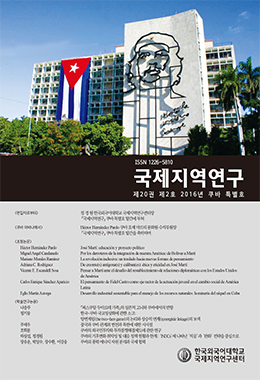국제질서의 주도권을 둘러싼 미·중의 전략적 경합이 전방위에서 진행 중이다. 양 강대국 모두 국제사회의 공동선(善)을 추구하는 다자협력을 강조하고 있으나, 실제로는 진영경쟁에 매진하고 있다. 미국 주도의 자유주의 국제질서(LIO)를 회복하려는 바이든 대통령의 다자주의 전략은 민주주의 국가들과의 반중 연대를 지향하고 있어 다자주의 민주동맹에 참가하지 않는 국가 들에게는 배타적이다. 중국은 대규모 재정적·인적 자원을 동원하여 다자기구에서 적극적으로 영향력을 확대해왔으나, 국제법과 규범을 무시하는 중국식 다자주의에 대한 비판이 크다.
역내 (소)다자 협력도 미·중 대립이 가장 첨예한 인도·태평양(인태) 지역 LIO를 지탱하는 하나의 축으로 기능하기보다는 양 강대국의 지정학적 경합이 충돌하는 기제로 변질할 가능성이 크다. 이러한 맥락에서 미·중 전략경쟁을 완화하기 위한 중견국 역할론이 주목받고 있다. 양 강대국이 주도하는 네트워크가 갈등적 경쟁상태일 때, 중견국 연합체의 행위에 따라 경합하는 안보 네트워크들의 관계가 더 분쟁적이 되거나, 더 협력하게 될 수도 있기 때문이다. 결국, 중국의 부상, 미국 패권의 상대적 쇠락 및 미·중 전략경쟁으로 도전받고 있는 LIO의 향배는 미국이 중국과의 패권경쟁 상황에서 글로벌 공공재를 계속해서 제공할 능력과 의지가 있는지와 더불어, 역내 중견국이 주축이 되는 국제사회가 LIO를 위해 얼마나 건설적인 역할을 수행할 수 있는지에 크게 영향받게 될 것이다. 본고는 강대국에 대한 레버리지 확대를 위한 (소)다자협력의 중요성을 강조한다는 점에서 신제도주의적 관점을 취하지만, 강대국 정치라는 구조에서 각국이 국익확보의 일환으로 (소)다자협력과 중견국 역할에 주목한다는 점에서 신현실주의적 시각을 포함한다.
The U.S.-China relationship is exacerbating into an all-round competition as their zero-sum "frame competition" over global hegemonic influence. Both big powers put forward multilateralism, which originally aims at pursuing the common good of the international community, not individual national interests. But in reality, they are competing against each other to bring more countries to their side. Biden's multilateralist strategy to restore the U.S.-led liberal international order(LIO) is exclusive to countries that do not participate in the multilateral democratic alliance as it aims for anti-China solidarity with democracies. China has been actively expanding its influence in multilateral organizations through financial and human contribution, but Chinese-style multilateralism is criticized for being a rhetoric to ignore international laws and norms and forcefully carry out its national interests.
As the U.S.-China hegemony competition is getting fierce, small and medium-sized countries are in a strategic dilemma of choosing between them. ‘Minilateral’ cooperation at the regional level is also likely to turn into a venue for a clash of geopolitical competitions between the U.S. and China rather than functioning as a mechanism that supports the LIO in the Indo-Pacific region. As a result, the middle power diplomacy (despite various limitations) is drawing attention. After all, the future of the U.S.-led LIO, challenged by China's rise, the relative decline of U.S. hegemony, and the U.S.-China strategic competition, will depend on whether the U.S. has the ability and will to continue to provide global public goods, and whether the international community, centered on middle power countries in the region, will provide support or solidarity for U.S. leadership.




